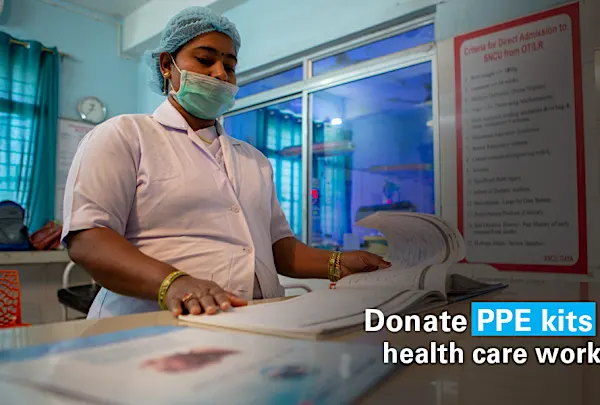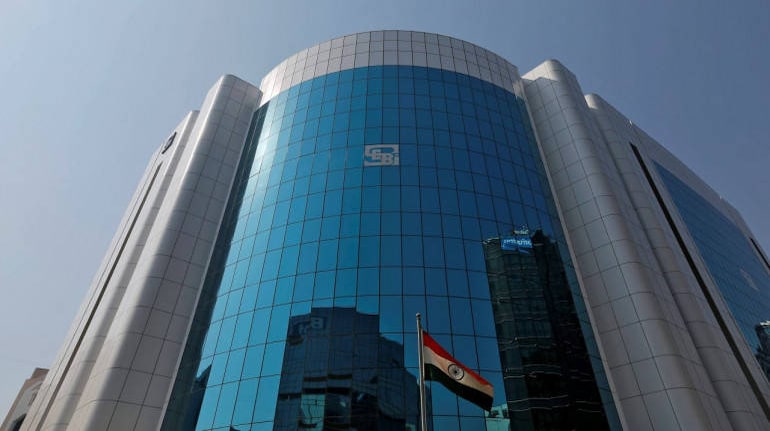Last Updated : May 22, 2020 06:56 PM IST | Source: Moneycontrol.com
COVID-19 | Helicopter drop of money gets mainstream policy attention
Why doesn’t the RBI print money, hand it over to the government and let it distribute the cash among those who need it the most? The policy toolkit has no levers to deal with economy-wide forced lockdowns for an undefined period of time. It may just be the right time for a helicopter drop of money. For, no one knows how long this slide will last.
How do you frame policies in a scenario that calls you to lock down the entire economy? How do you prescribe strategies when the only known solution, so far, is persistent social distancing for an indeterminate period?
As policy wonks from New York to New Delhi look for answers to these questions, a popular textbook theory is fast gaining traction to deal with the economic fallout of COVID-19: 'helicopter drop' of money.
Here’s a lowdown:
Why are governments across the world thinking of giving cash handouts to people?
Confining millions to their homes to contain COVID-19’s spread has had a direct bearing on the economy. An economy-wide squeeze has made those at the lowest income scale, such as migrant daily wagers and street vendors, most vulnerable. These are the class of people who need immediate hand-holding and one of the surest ways of doing that is to put more money in their hands and bank accounts.
So, where’s the problem?
The problem, however, is where will the governments get the money to finance such a programme.
Why can’t the government borrow and spend?
Higher government borrowing can end up raising loan rates for individuals and corporates.
How? What is the relationship between government borrowing and individual borrowing rates?
The government, companies and individuals all borrow from the same pool of lendable resources of banks. Higher government borrowing would imply that banks will have lesser amounts to lend to individuals and corporates. This can push up interest rates as companies and households will jostle to borrow from a shrinking lendable pie.
Why doesn’t the RBI print extra notes to lend to the government?
What does the 'monetisation' of the fiscal deficit mean?
The fiscal deficit is a measure of government borrowing. Monetising deficit means that the RBI prints more money to finance the government’s debt.
Didn’t India monetise its deficit earlier?
Until 1997 fiscal deficit was automatically monetised, by printing extra currency, through the issue of special securities called ad-hoc Treasury Bills.
The government, through the Finance Act 2017, enabled the RBI to print extra currency to partly monetise the Centre’s fiscal deficit under certain conditions.
What is helicopter drop?
Helicopter drop (a metaphorical descriptor), first coined by Nobel laureate Milton Friedman, is an unconventional policy tool, where the country’s central bank prints large sums of currency notes.
These are printed specifically to allow the government to distribute it among citizens to raise their income levels, enable more spending and stimulate a falling economy.
The helicopter-drop theory is predicated on the basic assumption that the money put directly in people’s bank accounts will prompt them to spend parts of it on goods and services, boost demand for products and help keep the economy stay afloat.
Isn’t it the same thing as monetisation of the fiscal deficit or quantitative easing?
Quantitative easing and monetisation of fiscal deficit also involve central banks printing extra currency to buy government bonds. But, unlike “helicopter drop”, in quantitative easing the government has to pay back for the assets that the central bank buys.
In “helicopter drop”, the central bank prints the currency notes, gives it to the government, which doesn’t return them. It is non-repayable money transfer from the central bank to the government.
Has any country used 'helicopter drop' to deal with the current crisis?
New Zealand is considering distributing free cash directly to individuals as a way of policy stimulus to help boost the economy reeling from a COVID-19 pandemic driven contraction.
Why hasn’t India attempted it to help the poor and vulnerable?
Such an approach can bring into question the central bank’s independence. Why should the RBI print extra notes for the political establishment to distribute? It also has execution hurdles. Who determines how much needs to be paid for how long and to whom?
The informal nature of India’s labour market makes it difficult to execute a helicopter-drop cash transfer. Administrative efficiency and data quality are big challenges, too.
First Published on May 22, 2020 12:58 pm
Last Updated : Jul 24, 2020 04:23 PM IST | Source: Moneycontrol.com
SEBI may put on hold move to amend Related Party Transactions rules as corporates are in no mood to do so now
Market regulator also likely to postpone a decision on the move to include key management personnel and promoters while passing special resolutions granting loans above a certain limit
Tarun Sharma @talktotarun
The Securities and Exchange Board of India (SEBI) may hold its plan to change the rules on Related Party Transactions (RPT) at least for some time. Opposition by corporate groups is said to be (one of) the reason, sources said.
SEBI had issued a discussion paper on expanding the spectrum of RPT in January this year after a working group it constituted in November 2019 submitted its report.
The group was constituted under the chairmanship of Ramesh Srinivasan, Managing Director, Kotak Mahindra Capital Market Company Ltd.
Deals by individuals related to the promoters of a listed company could be treated as RPT whether they individuals have shareholding influence on the company or not, the report had recommended.
Currently, the threshold for a case to be treated as RPT stands at 20 percent shareholding.
In the case of deals between a subsidiary of a listed company and a related company of the promoter, the Audit Committee of the company has to be informed, and the RPT threshold should come down from the current 10 percent to 5 percent, the report suggested.
Recently, stock exchanges had called a meeting with compliance officers of corporates houses. A source who attended the meeting told Moneycontrol: "Most corporates had reservations on increasing the spectrum of RPT definition. They think it would be difficult to maintain such clauses and it will increase the compliance burden on the company".
“By including subsidiaries in the RPT definition, the committee is seeking to prevent misuse of such transactions through unlisted subsidiaries. If the recommendation is accepted, shareholder votes would be required at the listed company level, even in cases where the listed company is not a party to the transaction,” Anand Lakra, Partner, J Sagar Associates, explained.
He said this is a good development and “follows the principle stated by the Kotak committee on corporate governance that while a shareholder only buys direct listed securities, the value is derived from the entire/consolidated group as a whole.”
According to Sonam Chandwani, Managing Partner at KS Legal & Associates, “the existing regime leaves room for abuse without adequate mechanisms to oversee transactions and penalise violators.”
One source told Moneycontrol that “COVID days are not the right time. Now, corporates need hand-holding for sailing through smoothly”.
However, Amit Tandon, Co-founder and MD of IIAS Proxy Advisory, presented a counter-point. “Tightening RPT has been on SEBI’s wish list since 2011. They have made progress on it and need to see this through. This is not linked to the pandemic in any way,” he said.
SEBI is also likely to postpone a decision on the move to include key management personnel and promoters of a company while passing special resolutions granting loans or guarantee/security above a certain limit.
Currently, companies can grant loans or guarantee / security to any person, including a promoter, key management personnel, or even corporate houses up to 60 per cent of its paid-up share capital, free reserves and securities premium account. A special resolution at a general meeting is required for anything beyond that.
First Published on Jul 24, 2020 04:23 pm
Last Updated : Jul 24, 2020 09:00 AM IST | Source: Moneycontrol.com
Corporatization of Ordnance Factories Board: Its time should have long come
Efforts to transform OFB into a globally competitive entity have yet again started on a previous note with same disastrous consequences as a corollary.
Deba Mohanty
Interesting non-pandemic developments do occur during difficult Covid times. Such developments can span from miseries of individuals and institutions to states and the globe. While the states do confront such challenges, as part of regular considerations in aspects of governance, most appropriately on pandemic management, they may also face challenges of addressing issues that they may not have liked in these times, although such problems are an inherent part of national governance. An interesting case in India that deserves our attention now – corporatization of Ordnance Factories – an issue whose time should have long come.
Consider the threads of a single issue during Covid times: a) Honorable Finance Minister Nirmala Sitharaman, on 16 May 2020, announced corporatization of Ordnance Factories (hereafter, OFB) with an eye on autonomy, accountability and efficiency in order to achieve grand strategic objective of making India self-reliant in defence; b) considerable deliberations by affected parties as a corollary – All India Defence Employees Federation (AIDEF), Bhartiya Mazdoor Sangh (BMS) and others – during such times and gearing up for a nationwide strike on 28 July 2020 in opposition to this decision; and c) a logical follow up of administrative measures of the government decision to its conclusion in coming times as part of the reform process in Ordnance Factories (OFs).
Ex-employees of OFB, in their decision to oppose corporatization efforts by the government, have brought the Expression of Interest (EOI)-cum-Request for Proposal (RFP) into question before the Central Vigilance Commission, and sought answers. This complaint is based on a 30 page complaint titled “Gross Irregularities cum RFP Document of DPP for Corporatization of the OFB”, submitted by the employees to the CVC on 20 July 2020.
The EOI-cum-RFP document, asking for engagement of a suitable Indian consulting firm to propose steps for a broad set of reforms, administrative and structural rearrangements along the lines of a corporate entity. Although a suitable consultant is yet to be found out, in all probability the eventual winner would be one of the Big Four (PwC, E&Y, Deloitte and KPMG) consulting firms (all of which are multinationals with Indian branches with Indian characteristics), the approach to reform OFB into a globally competitive arms manufacturing entity is ideationally flawed and practically non-productive, to say the least.
Ideational flaws are embedded in OFB’s a dual historical narrative: a) OFs, the oldest among the Indian arms producers (mostly privately owned during pre-British times like Walchand Hirachand or Garden Reach or Mazagaon Docks except for 16 OFs till Indian independence) have always been sandwiched between the government of the day (British Administration during pre-independence and Indian Government thereafter) and the customers – Indian Army, State Police and Para-military Forces – and the prime customers; and b) OFB’s perception-led non-performance and hence pilloried since 1940s have reduced it to an obedient entity rather than a proactive innovator and producer.
There is an interesting customized cultural distinction that distinguishes OFs from DPSUs – while the former equally caters to oftentimes impractical demands from all clients and in the process being victims to whims and fancies of two gigantic ministries (MoD and MHA) that are oftentimes at loggerheads than in tandem, most of the other DPSUs are lucky to escape the wraths of their prime clients. This way, OFB and HAL (to a large extent) are on the same boat as pilloried boys of Army and Air Force respectively, while DPSUs like Mishra Dhatu Nigam Limited or Bharat Electronics or Bharat Earth Movers Limited have the luxury of diluted wraths as not only they cater to a diversified clientele but more importantly they can maneauvre diktats from babus in the MoD unlike their OFB and HAL counterparts.
Structurally, OFB, along with other DPSUs, is a victim of a masterly manipulated system that is so embedded into a tightly controlled operational mechanism (to some extent, this could be due to a contested civil-military relations domain, where the civil side dominates for all practical purposes) that even a small step toward a particular reform within its administrative structure would invariably meet stiff resistance. It is not for nothing that an avowal from the Finance Minister has evoked so much anger within the OFB!
Ideationally and structurally, OFB or for that matter all other DPSUs should have been truly independent entities so that they could find their own feet in the ubiquitous world of arms manufacturing. State control should have gone in a phased manner to enable them to be globally competitive. India walked in the opposite direction and the results of performance of state-owned arms producers are there for all to see. They not only suffer from ideational confusion but also have been a victim of structural complexities.
Corporatization of OFB, whose noble intents should not be in doubt, is a step that should have been carefully crafted and implemented by the MoD. Instead, wise efforts by the MoD to reform it will only delight the paid consultant, anger the employees with protests and resultant protests, keep the structural complexities with overwhelming babu dominance intact and keep the producer (OFB), designer (DRDO) and customer (Military, Para-Military and Police Forces) distinctly distant from each other.
The author is Vice President at the Society for the Study of Peace and Conflict (SSPC), New Delhi. Views are personal. He can be reached at deba205@gmail.com / debamohanty@sspconline.org
First Published on Jul 23, 2020 04:55 pm
Last Updated : Jul 23, 2020 04:40 PM IST | Source: Moneycontrol.com
Finance ministry says ensuring transmission of repo rate cut by banks crucial
Banks in the country are likely to witness a spike in their non-performing assets ratio by 1.9 percent and credit cost ratios by 130 basis point in 2020, following the economic slowdown on account of Covid-19 crisis, S&P Global Ratings said in a report
Kamalika Ghosh @GhoshKamalika
Though the Reserve Bank of India (RBI) has reduced the policy repo rate by 115 basis points since March to boost India's sagging economic growth, the finance ministry is concerned about the slow transmission rate.
"Lowering of interest rates is not the issue presently, and there is a case for RBI to reduce it even further. But the problem that needs to be addressed immediately is the transmission and what this rate cut is doing to spur demand," a senior government official told Moneycontrol.
The issue that needs to be addressed by all stakeholders right now is how to ensure that the benefit is passed on to where it's needed the most. "It has to be understood that these are long term structural changes. So, when people are ready to take the benefit of cheaper loans, it has to be available to them," the official said.
Between February 2019 and May 2020, though the cost at which banks borrow from the RBI fell by 225 basis points, the weighted average lending rate (WALR) - the interest rate paid by borrowers on bank loans - during the same period, has dropped by 151 basis points on the fresh loans and merely 37 basis points on existing loans.
Given the economic situation at present, banks are taking a conservative approach in retail lending, as uncertainty looms large over retail segment loans as the private sector grapples with pay cuts and job losses.
The RBI, however, has said transmission of interest rates in fresh floating rate loans has considerably improved after external benchmarks were introduced in October. Last year, the RBI asked banks to move all floating rate retail and small business loans to an external benchmark to quicken transmission of interest rates.
"There's another component that banks charge, apart from the cost of deposits and repo rate, a risk premium. This is based on an assessment made after studying a borrower's financial profile. Now, with the job losses and pay cuts denting incomes, banks have increased the risk premium. Everything together is pushing up the cost of loans," a banking sector analyst who did not wish to be quoted, said.
Banks in the country are likely to witness a spike in their non-performing assets ratio by 1.9 percent and credit cost ratios by 130 basis point in 2020, following the economic slowdown on account of Covid-19 crisis, S&P Global Ratings said in its report titled 'For Asia-Pacific Banks, COVID-19 Crisis Could Add $300 Billion To Credit Costs.'
The report said that the NPA ratio in India was likely to fare similarly to China's (1.9-2 percent) but the credit costs ratios could be worse, increasing by about 130 basis points.
First Published on Jul 23, 2020 04:40 pm













No comments:
Post a Comment